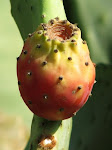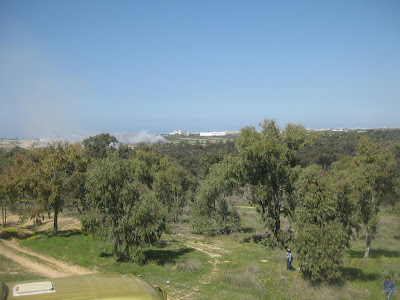It was hot outside, desert- like weather; I didn't have a decent map, and the local municipality was not very helpful.
When I finally got to that apartment, the tenant, a middle aged woman, russian accent, opened the door reluctantly, We had a brief conversation after which she 'forwarded' her dog to "say hello" to me, and closed the door. Well, at least I got away with some valuable information.
the old building
children's playground nearby
main road under construction
The town has all the standard stuff : residential neighborhoods, malls, small recreational parks, banks, city complex market(open and covered spaces with veggies and fruit stalls, houseware and clothing areas), educational , religious,and cultural Centers, eateries.
There's also a magistrate court and a railway station.
painted tree trunk in the yard of the above welfare building
open market
['Nothing new under the sun'. It's a fact that if manufacturing industry goes, the place fades away. That's why great efforts are made (including generous subsidies) in attracting industrial investmemts and preventing their leaving the area].
I bought some delicious black grapes at the covered market, and so I left the city after a tiring day, with a sweet, aromatic taste in my mouth.
covered market





































